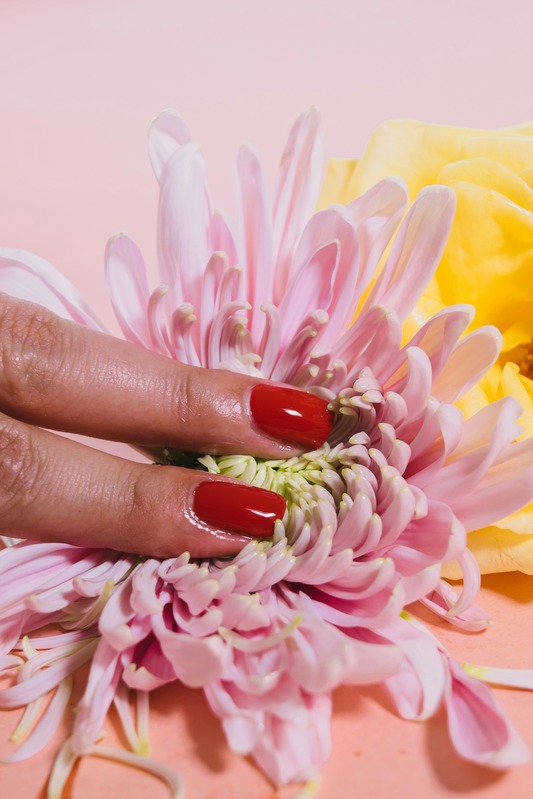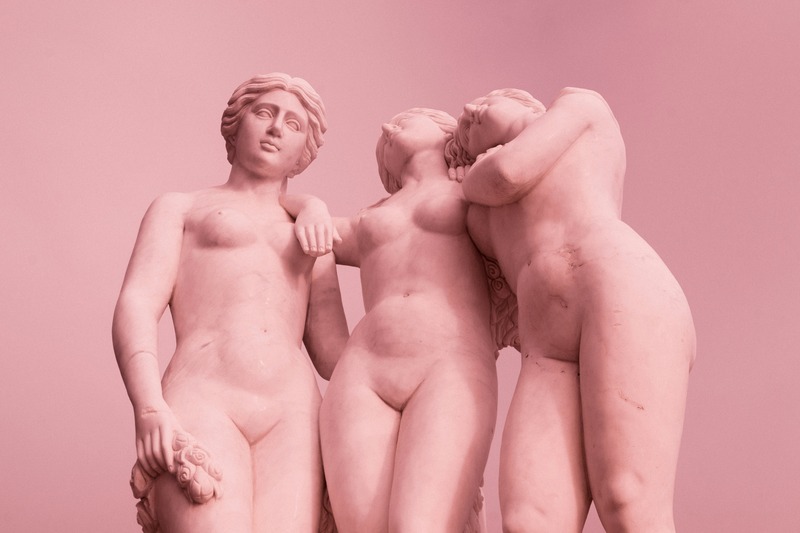Female ejaculation, often referred to as “squirting,” or Amrita in the Tantric tradition is a fascinating phenomenon that highlights the diversity of female sexual experiences and each individual’s experience is unique. For some, ejaculation may be more visibly external, while for others, it may be a more internal experience without the outward expression commonly associated with female ejaculation. Understanding that this isn’t a one-size-fits-all process can help demystify female ejaculation and encourage a more accepting, varied and inclusive view of sexual expression.
Let’s explore the biology behind squirting, dispel erroneous myths, discuss the wide variety of experiences, and offer suggestions for embracing this form of sexual expression in a compassionate, nonjudgmental way ( if you feel called to do so).

1. What Is Squirting?
Squirting involves the release of fluid from the female genital area during arousal or orgasm. It’s distinct from typical vaginal lubrication, which is produced by glands to help keep the vaginal tissues moist and comfortable. The female ejaculate has unique properties, which is one reason it captures so much interest.
Research on squirting is limited, but most studies identify the paraurethral glands, or Skene’s glands, as the likely source of this fluid. These glands are located near the urethra and can produce fluid during sexual stimulation. Yet, not all bodies respond the same way. The amount, frequency, and visibility of squirting vary widely, depending on an individual’s anatomy and arousal response.
2. Breaking Down the Myths Around Female Ejaculation
Female ejaculation is often misunderstood, leading to myths and misconceptions. Here are some common myths, along with the facts, to help clear things up.
Myth 1: All Women Can Squirt, Given the Right Technique
Not all people with female anatomy will squirt, and that’s completely normal. Various factors influence squirting, such as anatomy, comfort level, and stimulation type. The idea that everyone “can squirt” if they try hard enough isn’t true and can create unnecessary pressure. Furthermore not everyone is interested in exploring if their body wants to.
Myth 2: Squirting Is the Same as Urination
Some people assume squirting is urine because it comes from the urethral area, but the fluid produced during the female ejaculation process is chemically distinct from urine. While some traces of urine may mix in, squirting fluid is typically diluted and unique in composition.
Myth 3: Squirting Equals Orgasm
Squirting and orgasm are separate phenomena, and experiencing one doesn’t necessarily mean experiencing the other. Some individuals may squirt without reaching climax, and others may climax without squirting. It’s just one of the ways the body may respond to stimulation.

3. The Diversity of Female Bodies and Ejaculation
The ways people experience female ejaculation differ widely. Recognizing this diversity can help normalize all experiences, from visible squirting to internal ejaculation.
External Ejaculation:
For some, squirting is more visible, with noticeable fluid released from the urethra during stimulation, often through deep G-spot stimulation. This type of squirting can be more recognizable and may be easier to identify during intimate moments.
Internal Ejaculation:
Others may have an internal ejaculation experience, where fluid remains near the urethral area and is reabsorbed or released gradually with urination. This form is subtler but is also squirting, illustrating that female ejaculation doesn’t always look the same.
4. How to Approach Squirting in Intimate Experiences
Approaching squirting as an exploration rather than a goal can create a more enjoyable experience for both partners. Here are a few suggestions for making squirting a comfortable, pressure-free topic in intimate settings:
Communicate Openly:
Open conversations about squirting can help dispel anxiety. Create a safe space to share any curiosities, fears, or uncertainties about squirting, reassuring each other that it’s perfectly okay if squirting doesn’t happen.
Experiment with Sensations:
Try different types of touch and pressure to see what feels best. Many people find that G-spot stimulation helps trigger squirting, but remember that every body is different.
Release Expectations:
Squirting may or may not occur, and either outcome is perfectly expectable. Exploring the journey without expectations often leads to a more fulfilling experience for both partners.
5. Techniques That May Promote Squirting
For those curious about exploring squirting, certain techniques might enhance the likelihood:
G-Spot Stimulation:
The G-spot, located about two inches inside the vaginal canal on the front wall, is often more sensitive to rhythmic, firm stimulation. This area, closely linked to the Skene’s glands, is believed to play a role in squirting for many. Try experimenting with different pressures to discover what feels good.
Creating Relaxation and Arousal:
Squirting may be more likely when the body is deeply relaxed and aroused. Deep breathing, gentle massages, or slow, mindful foreplay can help create a setting where the body feels comfortable.
Adjusting Rhythm and Pressure:
Starting slowly and gradually increasing intensity can help the body warm up to higher levels of arousal, enhancing sensitivity in the G-spot area.

6. Embracing the Body’s Unique Responses
Squirting is just one of many natural responses that bodies might have during arousal. Accepting and celebrating this diversity allows for a sex-positive approach without pressure to conform to any “ideal” response. Instead, exploring pleasure openly fosters self-acceptance, letting each partner appreciate the wide variety of sensations and expressions that bodies can experience.
7. A Note on Hygiene and Comfort
If squirting is part of your or your partner’s experience, here are a few practical tips to ensure comfort and ease:
Prepare the Space:
Having towels nearby or waterproof sheets can create a more relaxed environment, alleviating worries about clean-up afterward.
Stay Hydrated:
Adequate hydration can influence the concentration of fluid expelled during squirting.
Choose Body-Friendly Products:
After intimacy, a gentle rinse with water is usually all that’s needed for hygiene. Avoid harsh soaps or douches, which can irritate sensitive tissues.
8. The Role of Mental Comfort in Squirting
While the physical aspects of squirting often get the most attention, the mental and emotional sides are just as important. For many, feeling emotionally safe and mentally relaxed can make all the difference. Squirting isn’t simply a mechanical response; it often requires letting go of control and embracing a sense of vulnerability, which can feel tender and vulnerable for some. Creating a comfortable, judgment-free space is essential. Partners who openly support and reassure each other can help ease anxiety and foster a positive, relaxed environment. For individuals exploring squirting solo, creating a cozy, private space can also feel wonderfully supportive to your exploration.
9. Squirting as Part of a Holistic Sexual Experience
Squirting can sometimes be seen as some sort of a “milestone” to achieve, but framing it as just one part of a holistic sexual experience can remove performance pressure. Instead of setting squirting as a primary goal, try focusing on the entire range of sensations that contribute to overall intimacy. This shift can make squirting feel like a bonus rather than a benchmark, adding to the enjoyment without detracting from other forms of pleasure and connection. Letting go of expectations can free you up to be fully present in the experience, allowing whatever responses arise to feel more organic and authentic.

10. Embracing Curiosity and Self-Discovery
Squirting, like many intimate experiences, is a journey in self-discovery. Whether you’re just beginning to explore or have already had experiences with squirting, staying curious and open to new sensations can foster a deep sense of self-awareness and acceptance. This journey isn’t about achieving a final goal but growing more attuned to your body and its signals. Understanding that arousal, pleasure, and release can manifest in different ways can cultivate a more nuanced appreciation of sexual pleasure.
11. Redefining Pleasure Without Comparison
It’s easy to feel the influence of media and cultural perceptions that may portray squirting as a “must-do” or highlight it as the “ultimate” form of female pleasure. Remember that each person’s relationship with their body and their experiences of pleasure are distinct. Sexual satisfaction is a personal journey and doesn’t need to be defined by any specific outcome or experience. Allowing yourself to define pleasure based on your unique needs rather than comparison can be incredibly empowering.
12. Supporting the Journey with Self-Compassion
Lastly, whether squirting is part of your experience or not, it’s helpful to approach each exploration with self-compassion. There is no single way to experience pleasure or express arousal. Giving yourself the space to experience intimacy without judgment can build confidence, comfort, and a deeper connection with yourself and your partners. As with any new experience, showing patience toward yourself and recognizing that learning what feels best can take time allows for a more relaxed and positive experience.

The Beauty of Individuality in Sexual Expression
Squirting is just one of many beautiful and diverse ways that bodies can respond to pleasure. Whether it’s an occasional part of your experience or something you’ve never encountered, it’s all part of a unique tapestry of sexual expression that deserves to be embraced. Each individual’s journey in understanding and appreciating their body is valid and worth celebrating. Rather than focusing on specific outcomes, nurturing an open, curious, and loving approach to one’s sexuality allows for a fulfilling and satisfying intimate life that’s deeply personal.
Squirting, like all expressions of pleasure, is unique to each person—so feel free to explore, savor, and appreciate every part of your body’s journey without expectations.
With mutual understanding, an open mind, and a focus on pleasure rather than performance, couples can explore their bodies’ unique responses and develop stronger intimacy. Squirting is simply one of the ways some bodies express arousal—embrace what feels natural and let go of any need to meet expectations. After all, exploring pleasure in a relaxed, positive, and pressure-free way is the key to a rewarding, intimate connection.
If you’re looking for guidance or support on your relationship journey, I’m here for you—don’t hesitate to get in touch!

